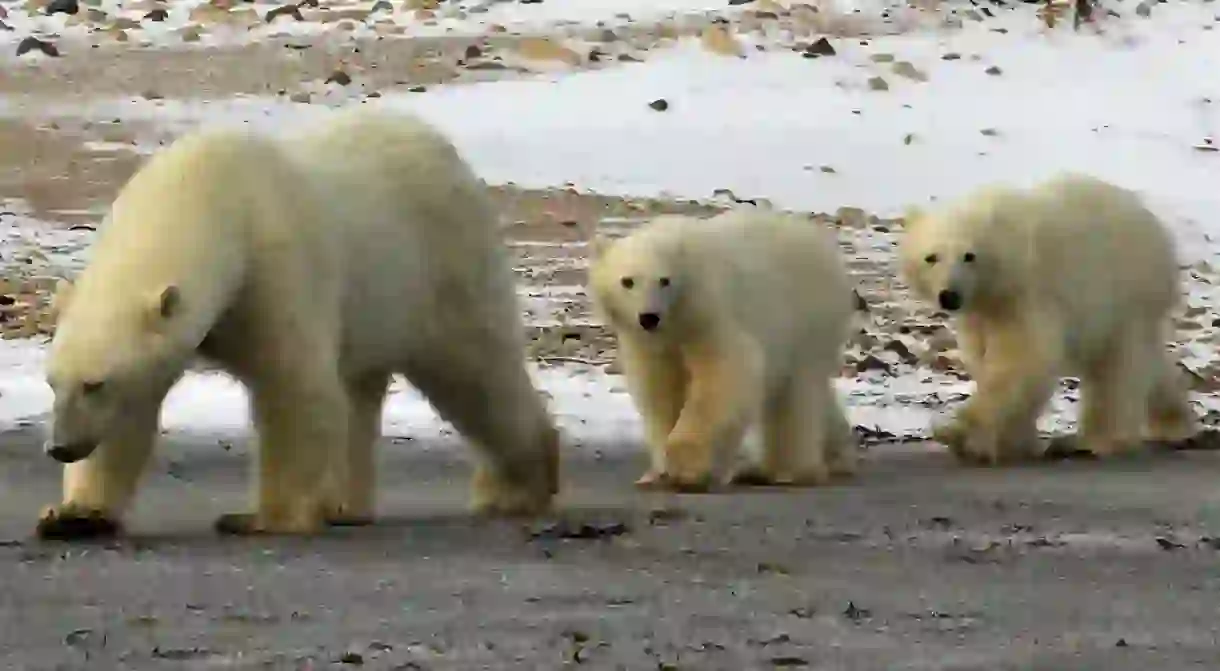How to Go Polar Bear Watching in Quebec

Having immersive experiences with different ecosystems is one of the best ways to appreciate the intricacy of the planet that we live on, and the remote Arctic Circle is one of the least accessible of these regions. A new tour is being offered in Northern Quebec that will allow ecotourists to head out onto the tundra and into the open waters of the north, and viewing polar bears in their natural habitat is one of the main attractions.
There are 19 recognized subpopulations of polar bears in the world, all of which inhabit the icy domains of the Arctic Circle across Canada, Greenland, Norway, Russia, and the United States (Alaska). However, the 13 North American subpopulations account for around 54% of the global polar bear population—with the greatest number being in Canada.

In Northern Quebec, the austerely beautiful Ungava Bay is home to a substantial polar bear population, in addition to a range of other Arctic wildlife. At the northern edge of Quebec’s Nunavik region, Ungava Bay separates Quebec from Baffin Island. The average summer temperature is 7°C (45°F), while during the winter, the average is around −20°C (−4°F). That far north, it’s too cold for trees to grow. The Bay is also shaped by several Inuit villages, including Kuujjuaq, which is the largest.
So if you want to get a glimpse of polar bears in their natural habitat, this area is the best place to go. Through Great Canadian Wildlife Adventures, ecotourists can explore this remote and unusual region by boat, under the direction of local Inuit guides.

This excursion is a multi-day, small-group tour that involves extensive boating and camping at coastal sites. There are four departure dates, all of which are during August and September—when the weather is at its most hospitable. During the tour, day trips from the camps to the coastal islands in the open waters of Ungava Bay will allow visitors to observe where polar bears spend their summers fishing, hunting for seals, resting, sleeping, and waiting for the winter sea ice to return.

Although polar bears might be the most exciting wildlife to spot, other sights include herds of musk-ox, seals, beluga whales, a variety of shorebirds, and icebergs. You might be able to witness the magical Northern Lights while you’re there as well. The itinerary is action-packed and will appeal to those who are adventurous at heart.

Polar bears are carnivorous, unlike other bear species, such as the Kodiak, grizzlies and black bears, and seals are their preferred food. While they move across land and snow, they also hunt from the edge of sea ice and in open water, which classifies them as marine animals. Due to ongoing and expected habitat loss caused by the effects of climate change, however, the polar bear is classified as a vulnerable species. Indeed, at least three of the 19 polar bear subpopulations are currently in decline.













